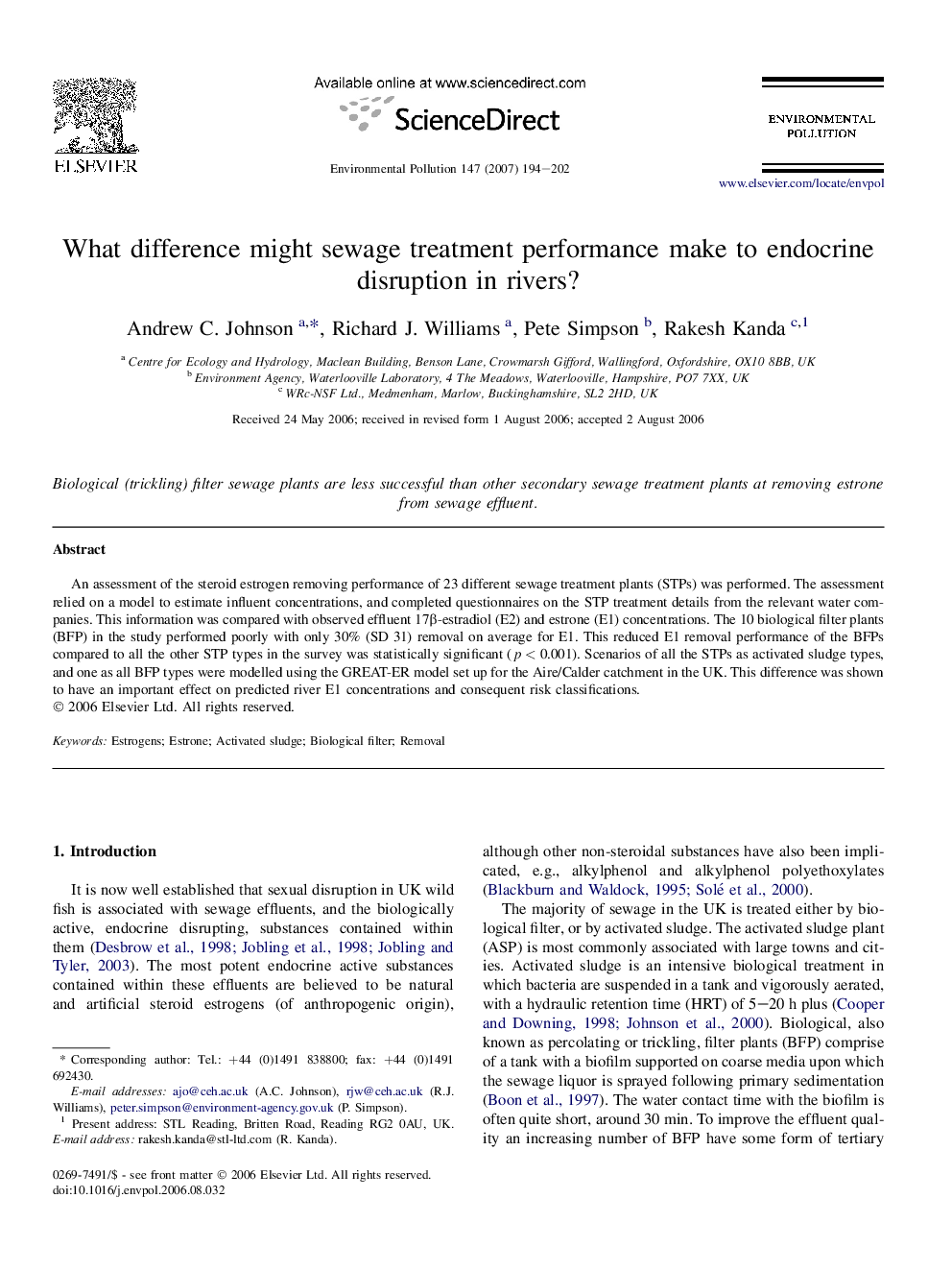| Article ID | Journal | Published Year | Pages | File Type |
|---|---|---|---|---|
| 4427081 | Environmental Pollution | 2007 | 9 Pages |
An assessment of the steroid estrogen removing performance of 23 different sewage treatment plants (STPs) was performed. The assessment relied on a model to estimate influent concentrations, and completed questionnaires on the STP treatment details from the relevant water companies. This information was compared with observed effluent 17β-estradiol (E2) and estrone (E1) concentrations. The 10 biological filter plants (BFP) in the study performed poorly with only 30% (SD 31) removal on average for E1. This reduced E1 removal performance of the BFPs compared to all the other STP types in the survey was statistically significant (p < 0.001). Scenarios of all the STPs as activated sludge types, and one as all BFP types were modelled using the GREAT-ER model set up for the Aire/Calder catchment in the UK. This difference was shown to have an important effect on predicted river E1 concentrations and consequent risk classifications.
